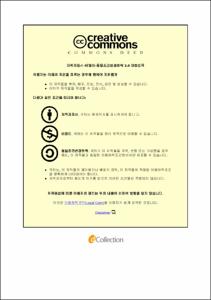폐 이식 후 기도 합병증
- Alternative Title
- 위험 요인, 임상 특성에 대해
- Abstract
- Background
Recently, lung transplantations have been performed increasingly in Korea, and the outcomes have also been improved over time. However, airway complications after lung transplantation are still associated with considerable morbidity and mortality. The aim of this study was to investigate the incidence, risk factors and clinical impacts of airway complications after lung transplantation.
Methods
The medical records of 154 patients who underwent lung transplantation between 2008 and 2021 were retrospectively reviewed. Patients were divided into two groups: airway complication group, in which patients experienced airway complications after transplantation; non-airway complication group, in which patients did not experience any airway complication during the follow-up period.
Results
The median follow-up period was 20 months. Mean age of patients was 51.3 years and 63.6% was male patients. Of the 154 patients, 31 (20.1%) patients experienced postoperative airway complications, where 123 (79.9%) patients did not. A total of 40 airway complications occurred in 31 patients, and the most common airway complication was stenosis (n = 29), followed by ischemia (n = 7), necrosis (n = 2), and malacia (n = 2). On multivariate Cox analysis, the higher BMI of recipient (Hazard ratio [HR], 1.116; 95% CI, 1.027-1.211; p = 0.009) was a significant independent risk factor for airway complication with postoperative ECMO (HR, 4.566; 95% CI, 1.472-14.166; p = 0.009). Of the 31 patients who had airway complications, 22 (71.0%) were managed by bronchoscopic intervention, of which 13 (41.9%) underwent an average of 2.1 balloon dilatation, and 9 (29.0%) needed stent insertion after balloon dilatation. There was no significant difference in survival between airway complication group and non-airway complication group.
Conclusions
Our current study revealed a fifth of patients who received lung transplantation experienced airway complication during follow-up period. Patients with higher BMI and postoperative ECMO are a risk factor of airway complication, and close monitoring is warranted in these patients.
|폐 이식은 말기 폐질환에 대한 유일한 치료 수단이자 장기 생존 및 삶의 질 향상 효과가 입증된 치료로, 최근 한국에서도 그 시행이 점차 증가하고 있다. 시간이 지남에 따라 폐 이식의 예후 또한 점차 향상되고 있으나, 기도 합병증은 여전히 수술 후 주요 합병증으로 남아 폐 이식 후 이환율과 사망률의 주요 원인을 차지한다. 하지만 폐 이식 후 기도 합병증에 대한 연구는 여전히 부족하며, 이전 연구 결과들은 뚜렷한 일관성을 보여주지 못하였다. 이에 본 연구에서는 폐 이식 후 기도 합병증의 위험 인자, 특성 및 임상적 의의를 분석하고자 한다.
본 연구는2008년부터 2021년까지 폐 이식을 시행한 154명의 환자들을 대상으로 이루어졌으며, 추적관찰 기간 동안 폐 이식 후 기도 합병증이 발생한 기도 합병증 발생군과 발생하지 않은 기도 합병증 비발생군으로 나누어 분석하였다.
환자들의 평균 연령은 51.3세로, 남성이 63%를 차지하였다. 중앙 추적관찰 기간은 20개월이었으며, 해당 기간 동안 154명의 환자 중 총 31명 (20.1%)이 폐 이식 후 기도 합병증을 경험하였다. 가장 흔한 기도 합병증은 기도 협착이었으며, 기도 허혈, 괴사, 연화증이 뒤를 이었다. 폐 이식 후 기도 합병증 발생 위험인자에 대한 분석 결과, 수혜자의 높은 체질량 지수와 폐 이식 후의 체외막산소요법은 기도 합병증 발생에 대한 유의한 독립적 위험인자로 확인되었다. 기도 합병증이 발생한 31명 중 22명 (71.0%)에게 풍선 확장술 혹은 스텐트 삽입술과 같은 기관지내시경 중재술이 시행되었으며, 기관지내시경 중재술 시행과 연관된 심각한 시술 합병증은 발견되지 않았다. 기도 합병증 발생군과 비발생군 사이의 생존율 또한 유의한 차이가 없었다.
이식 후 기도 합병증은 여전히 20% 내외의 발생률과 함께 폐 이식 후 주요 문제로 남아있다. 수혜자의 높은 체질량 지수와 폐 이식 후의 체외막산소요법이 기도 합병증의 위험을 유의하게 높일 수 있으므로 이러한 환자군에서 기도 합병증에 대한 면밀한 관찰이 필요할 수 있다. 하지만 기도 합병증은 보존적 치료 혹은 기관지내시경 중재술에 의해 성공적으로 관리될 수 있으며, 폐 이식 후 기도 합병증의 발생은 생존률에 유의한 영향을 미치지 않았다.
- Issued Date
- 2022
- Awarded Date
- 2022-02
- Type
- dissertation
- Alternative Author(s)
- Hyeonhwa Kim
- Affiliation
- 울산대학교
- Department
- 일반대학원 의학과
- Advisor
- 김호철
- Degree
- Master
- Publisher
- 울산대학교 일반대학원 의학과
- Language
- kor
- Rights
- 울산대학교 논문은 저작권에 의해 보호 받습니다.
- Appears in Collections:
- Medicine > 1. Theses (Master)
- 파일 목록
-
-
Download
 200000600609.pdf
기타 데이터 / 458.02 kB / Adobe PDF
200000600609.pdf
기타 데이터 / 458.02 kB / Adobe PDF
-
Items in Repository are protected by copyright, with all rights reserved, unless otherwise indicated.